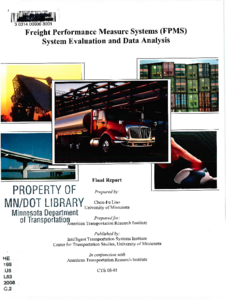Analysis of a Differential Global Positioning System as a Sensor for Vehicle Guidance
Date Created
1996-09
Report Number
97-17
Description
Implementation of WIM Data Analysis and Simulated Scenarios (Presentation)
Date Created
2014-12
Report Number
2015-18PP
Description
Implementation of Traffic Data Quality Verification for WIM Sites
Date Created
2015
Report Number
2015-18
Description









